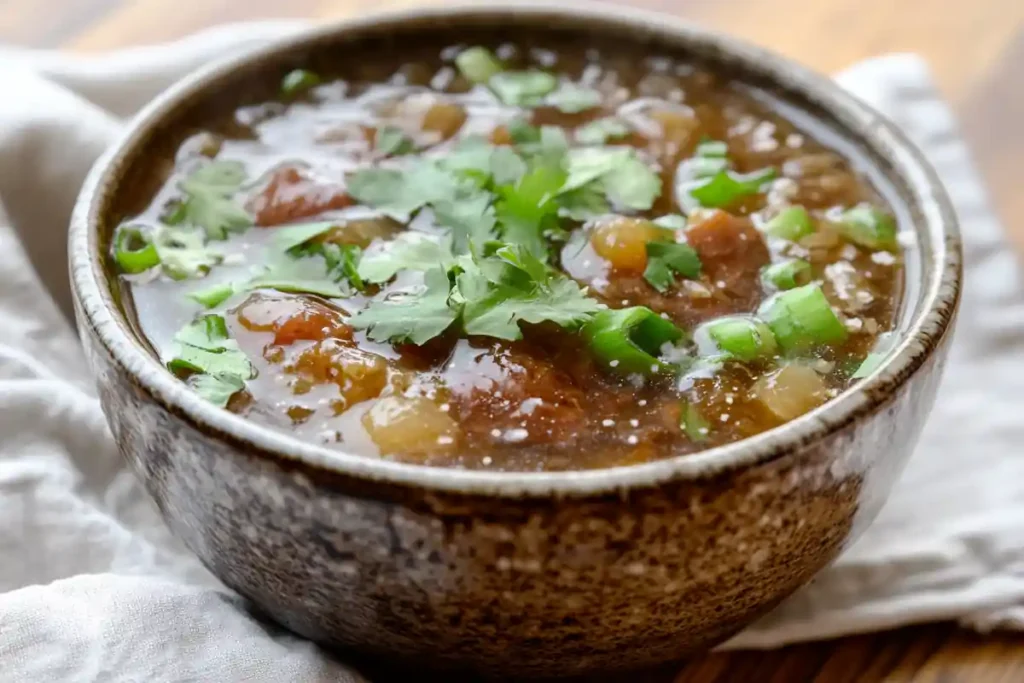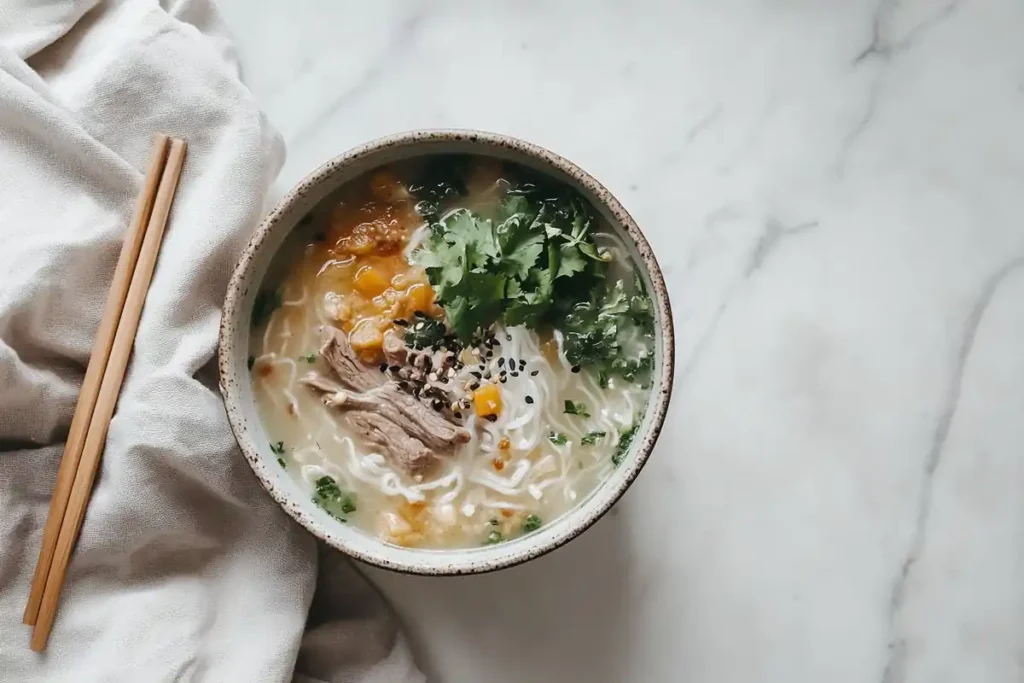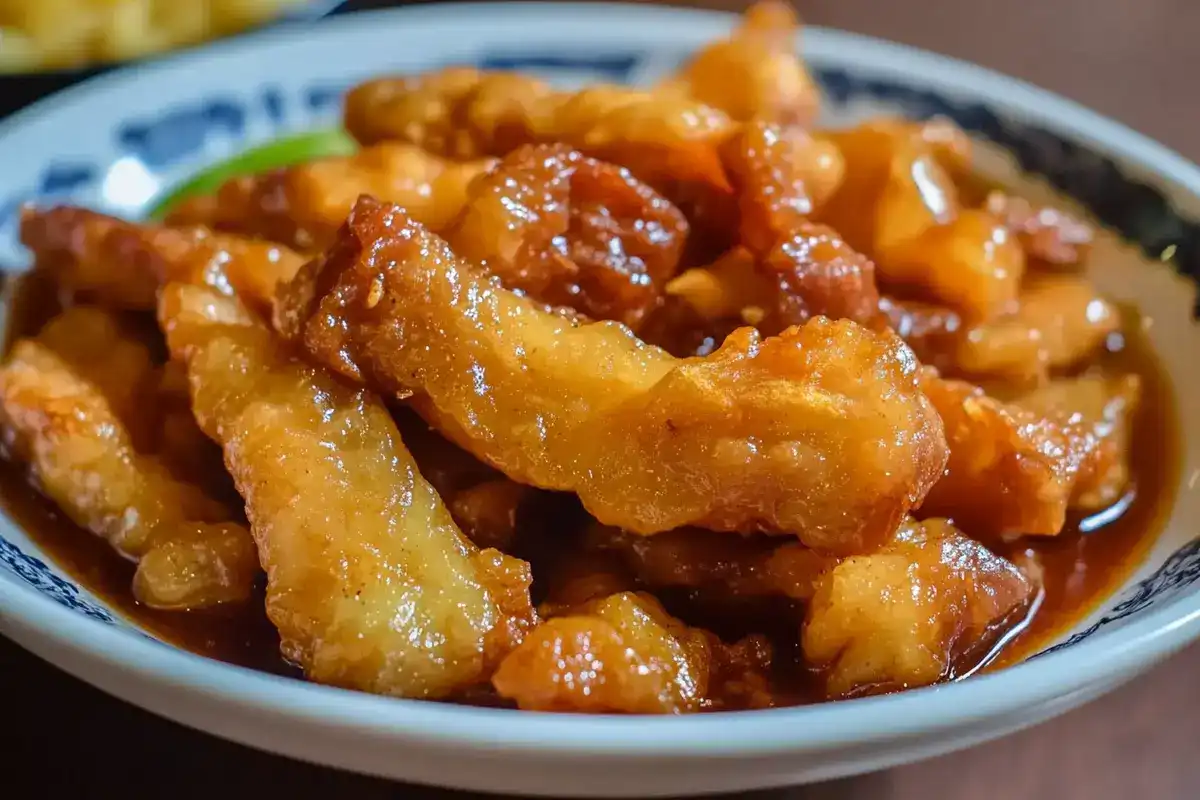When it comes to unsung heroes of the culinary world, beef tendon takes the crown. This collagen-packed, versatile ingredient has made its mark in kitchens across the globe. From the rich broths of Vietnam to hearty Caribbean stews, beef tendons have transformed into beloved components of flavorful dishes. But why are they so special? What are they exactly, and how do you cook them to perfection?
This guide delves into the science, techniques, and global appreciation of beef tendons. Whether you’re new to cooking with tendons or a seasoned chef, this article covers everything you need to know. Let’s start with the basics!
What Is Beef Tendon?
Beef tendon isn’t just a random cut of meat—it’s a culinary treasure. Before diving into recipes and cooking methods, it’s essential to understand what makes this connective tissue so unique.
What Are Tendons?
Tendons are fibrous connective tissues that link muscles to bones. They’re composed mainly of collagen, a protein that’s tough and requires slow cooking to break down. When cooked right, they transform into a gelatinous, melt-in-your-mouth texture that chefs and food lovers adore.
Despite their tough raw state, tendons don’t have much inherent flavor. However, they’re like sponges, soaking up the flavors of broths, spices, and sauces, making them a versatile addition to countless recipes.
Nutritional Benefits
Cooking with beef tendon isn’t just about taste—it’s also about health. Rich in collagen, tendons are fantastic for improving skin elasticity, joint health, and even gut lining. Plus, they’re low in calories and high in protein, making them an excellent choice for anyone seeking to boost their nutrient intake without overloading on fats or carbs.
Cuts of Beef Rich in Tendons
Not all beef cuts are created equal when it comes to tendon content. If you’re aiming to whip up a dish highlighting the beef tendon, knowing which cuts to use can save you time and effort while maximizing flavor and texture.
Beef Shank
The beef shank is a goldmine for tendons. This cut, taken from the leg area, contains dense connective tissue that becomes incredibly tender when slow-cooked. The collagen in the tendons not only adds a gelatinous texture but also enriches broths, making it ideal for dishes like pho and osso buco.
Want to know the secret to making tender shank recipes? A slow braise is key. Low and steady heat ensures the tendons break down completely, transforming into that melt-in-your-mouth goodness.
Oxtail
Although oxtail is often overlooked, it’s a fantastic source of connective tissue and flavor. The tendons in oxtail are bound tightly around the vertebrae, which gives this cut its unique chewy texture after proper cooking. Popular recipes include Caribbean oxtail stew and Korean jorim, both of which capitalize on its rich, meaty essence.
Tip: To get the best results, let your oxtail simmer for hours, and don’t forget to use the broth for soups—it’s packed with collagen and flavor!
Beef Knuckles
Beef knuckles, taken from the lower leg, are another excellent source of tendons. They contain a dense matrix of connective tissue, which makes them perfect for soups and stews. Ever tried beef tendon noodle soup? It’s a prime example of how beef knuckles can shine in a dish, offering rich texture and flavor.
How to Cook Beef Tendon

Cooking beef tendon requires patience, but the results are well worth the wait. These steps and tips will help you transform tough tendons into tender, gelatinous perfection.
Basic Preparation Techniques
Start by cleaning the tendons thoroughly. Trim away any excess fat or unwanted bits. To tenderize them, you can blanch the tendons in boiling water for a few minutes before starting your recipe.
Top Cooking Methods
- Braising: This is the most common method. Slow-cooking tendons in a flavorful broth or sauce at low heat for 2–4 hours ensures they soften to the perfect texture.
- Pressure Cooking: If you’re short on time, a pressure cooker can get the job done in a fraction of the time while locking in all the rich flavors.
When cooking, remember to include aromatics like ginger, garlic, and onion to elevate the flavor profile of the dish.
Enhancing Flavor
Since beef tendons are mild in flavor, they pair well with bold spices and herbs. Marinate them before cooking for deeper flavor penetration. After cooking, save the leftover broth—it’s a nutrient-packed base for soups or stews.
These parts set the foundation for understanding and cooking beef tendon. For more inspiration, you might explore diverse recipes using collagen-rich cuts, like in this guide to braised dishes.
Beef Tendon Recipes Around the World

From Asia to the Caribbean, beef tendon has cemented its place in culinary traditions worldwide. Its ability to absorb bold flavors and transform into a melt-in-your-mouth delicacy makes it an invaluable ingredient in countless dishes.
Asian Cuisine
In Asia, beef tendon is a cornerstone ingredient in many iconic dishes.
- Pho: Vietnamese pho often includes tender pieces of beef tendon alongside rice noodles and aromatic broth. The tendon’s gelatinous texture enhances the soup’s rich mouthfeel.
- Taiwanese Beef Noodle Soup: This hearty dish combines slow-cooked tendon, beef shank, and a deeply spiced broth. It’s comfort food at its finest.
- Chinese Stir-Fries: Tendon is frequently stir-fried with ginger and soy sauce, creating a savory dish that pairs perfectly with rice.
The key to these recipes is slow cooking or braising, which breaks down the collagen into a tender, flavorful treat.
Caribbean and European Dishes
In the Caribbean, oxtail stew is a beloved recipe that heavily features beef tendons. Slow-simmered with thyme, garlic, and other spices, the tendon becomes buttery and flavorful. Similarly, in European cuisine, braised beef shanks are a classic. Dishes like osso buco highlight the richness of tendons and connective tissues.
If you love hearty recipes like these, check out our guide to stews and braises for inspiration.
Modern Culinary Trends
In recent years, beef tendon has found a place in modern fusion cuisine. Chefs use its unique texture to create innovative appetizers like crispy tendon chips or as a topping for ramen. The ingredient is also gaining popularity among health-conscious food lovers for its collagen-rich properties.
FAQs About Beef Tendon
Curious about the versatility and nutritional benefits of beef tendon? Let’s explore some of the most common questions surrounding this fascinating ingredient and its uses in cooking.
What Is the Best Cut for Beef Tendon?
When looking for cuts rich in tendons, beef shank, oxtail, and knuckles are the top choices. These parts are packed with connective tissues, offering maximum collagen when cooked. The shank, in particular, is prized for its dense tendons that break down beautifully during slow cooking. Meanwhile, oxtail and knuckles contribute not only tendons but also robust flavors that enhance any dish. By choosing these cuts, you’ll ensure a gelatinous, tender texture that elevates your recipes.
Is Beef Tendon Healthy?
Yes, beef tendon is an excellent choice for health-conscious eaters. First and foremost, it’s low in fat yet incredibly high in protein, making it a fantastic option for anyone aiming to boost their nutrient intake. Furthermore, it’s rich in collagen, which is known to support joint health, improve skin elasticity, and aid in cartilage repair. When included in a balanced diet, beef tendon can provide essential amino acids without adding unnecessary calories. In addition, it pairs well with other nutrient-rich ingredients, creating meals that are both hearty and nourishing.
How Long Does It Take to Cook Beef Tendon?
Cooking beef tendon requires patience, but the results are well worth the effort. Slow cooking on low heat for 2–4 hours is ideal for breaking down its tough fibers, creating a tender, melt-in-your-mouth texture. If you’re short on time, a pressure cooker can reduce the cooking time to about 40 minutes while still yielding excellent results. Adding aromatics like ginger, garlic, or onion to the cooking liquid can enhance the overall flavor, making the wait even more rewarding. Regardless of the method you choose, remember that low and slow or pressure cooking is key to achieving perfection.
Where Can I Buy Beef Tendon?
You can often find beef tendon at Asian grocery stores, where it’s a staple ingredient in many traditional dishes. Specialty butcher shops also commonly stock beef tendon, and it’s becoming increasingly available in health food markets due to its growing popularity as a collagen-rich superfood. For added convenience, many online retailers now offer beef tendon, providing home cooks with easy access to this versatile ingredient. Wherever you purchase it, ensure it’s fresh and clean for the best cooking results.
For more delicious recipes and creative cooking ideas featuring beef tendon, explore our recipe collections to discover inspiration tailored to your culinary journey. Whether you’re a seasoned chef or a first-time cook, you’ll find plenty of ways to enjoy this nutritious and flavorful ingredient.
Tips and Tricks for Cooking with Tendons
Cooking with beef tendon can be intimidating at first, but with a few tips and tricks, you’ll turn it into the star of your dish. Here’s how to avoid common mistakes and get the most out of this unique ingredient.
Common Mistakes to Avoid
- Skipping Pre-Cooking Steps: Always clean the tendons thoroughly before cooking. Blanching them in boiling water for a few minutes removes impurities and helps achieve a cleaner flavor.
- Rushing the Process: Tendons need time. Whether you’re braising or pressure cooking, rushing the process will leave them tough and chewy instead of tender and gelatinous.
- Overpowering the Flavor: While beef tendon absorbs flavors well, overpowering spices can mask its natural richness. Balance bold flavors with subtle seasonings to let the tendon shine.
Preserving the Leftover Broth
After cooking beef tendon, you’ll often have a pot of nutrient-rich broth. Don’t toss it! This collagen-infused liquid can be strained and used as a base for soups, stews, or even sauces. Store it in the fridge or freeze it for later use.
For more tips on maximizing flavors in dishes, check out our stew and broth recipes for inspiration.
Beef Tendon in Culinary History and Modern Science
Understanding beef tendon’s role in culinary history and the science behind its transformation can deepen your appreciation for this incredible ingredient.
Historical Significance in Different Cultures
In many Asian cuisines, beef tendon has been a staple for centuries. Traditional dishes like pho in Vietnam or braised tendons in China showcase its cultural importance. These recipes often symbolize resourcefulness, as cooks used every part of the animal to create nourishing meals.
Even outside Asia, tendons have made their mark. In European cuisine, dishes like osso buco and oxtail soup utilize cuts rich in connective tissue. Similarly, Caribbean recipes incorporate tendons to enhance the texture and flavor of hearty stews.
Science Behind Its Texture and Flavor
The secret behind the unique texture of beef tendon lies in its collagen content. When cooked slowly, collagen breaks down into gelatin, creating a silky, tender consistency. This transformation not only enhances the texture but also contributes to the dish’s overall richness.
Modern culinary science has also revealed the health benefits of collagen, making beef tendon popular among health-conscious diners. Its ability to provide essential amino acids and promote joint health has elevated it from a traditional ingredient to a trendy superfood.
Conclusion
Beef tendon is a hidden gem in the culinary world, offering unmatched texture, flavor, and nutritional benefits. Whether you’re cooking traditional dishes like pho or experimenting with modern fusion recipes, tendons add a unique touch that elevates any meal.
By understanding the best cuts, cooking techniques, and cultural significance of beef tendon, you can unlock a world of possibilities in your kitchen. Its ability to transform into a tender, gelatinous delight while boosting your health makes it a must-try ingredient for adventurous cooks and health-conscious food lovers alike.
So why not give beef tendon a shot? With a little patience and creativity, you can turn this humble connective tissue into a standout dish that wows your taste buds. Happy cooking!
Related Questions and “People Also Ask”
Is Beef Tendon Tender?
Yes, beef tendon becomes incredibly tender when cooked properly. Initially tough and fibrous, it transforms into a melt-in-your-mouth texture after slow cooking or pressure cooking. The key is patience—methods like braising or simmering over low heat allow the collagen to break down, creating a silky, gelatinous consistency.
Is Eating Beef Tendons Good for You?
Absolutely! Eating beef tendons is not only delicious but also healthy. They are rich in collagen, which supports skin elasticity, joint health, and cartilage repair. Tendons are also high in protein and low in fat, making them a nutritious choice for those looking to boost their diet without adding unnecessary calories.
What Cut of Meat Is Beef Tendon?
Beef tendon is not a cut of meat but rather the connective tissue that links muscle to bone. It’s typically harvested from parts of the cow that see frequent movement, such as the legs (shank), feet, or shoulders. These tendons are collagen-rich and commonly included in cuts like shank, knuckles, and oxtail.
Are You Supposed to Eat the Tendon in Pho?
Yes, eating the tendon in pho is highly encouraged! Beef tendon is a key ingredient in traditional Vietnamese pho, adding a unique texture and richness to the dish. When cooked correctly, it becomes tender and gelatinous, perfectly complementing the noodles and aromatic broth. It’s both a textural delight and a source of added nutrition in this iconic dish.

